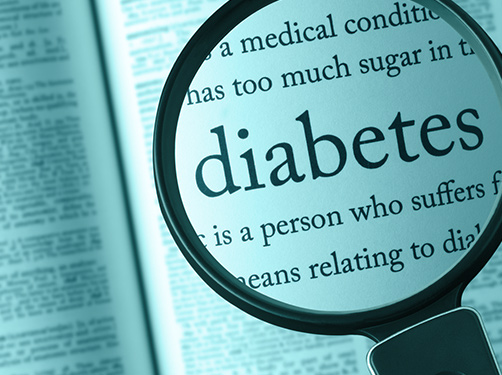What are the consequences of gestational diabetes for the mother?
Scientific support: PD Dr. Sandra Hummel
Even though most pregnancies with gestational diabetes are without complications, they are classified as high risk. Gestational diabetes can have acute consequences such as urinary tract infections and long-term consequences such as type 2 diabetes.
Regular blood glucose checks, a healthy diet and sufficient exercise can help reduce the risks of gestational diabetes. Breastfeeding the child can also have a positive long-term effect on the mother’s health.

What are the acute consequences of gestational diabetes for the mother?
Most women with gestational diabetes have a normal pregnancy. If blood glucose is, however, persistently too high, there can be health risks even during pregnancy.
The risks for the expecting mother during pregnancy include:
- Urinary tract and vaginal infections
- Premature labor that increases the risk of a premature birth
- High blood pressure that is sometimes accompanied by increased levels of protein in urine (preeclampsia).
- C-section delivery or birthing injury due to the child's high birth weight.
Good to know:
Women with gestational diabetes generally have a normal pregnancy. However, if blood sugar levels are consistently too high, this can have acute and long-term consequences for mother and child alike.
What are the long-term consequences of gestational diabetes for the mother?
The metabolic disorder usually disappears after giving birth. However, there can be a range of long-term consequences for the mother.
Type 2 diabetes: The long-term risk of chronic type 2 diabetes is especially high with gestational diabetes. In Europe, about 20 in 100 women who had gestational diabetes develop type 2 diabetes in the first year after giving birth. In the next 10 years, 30 to 60 in 100 women who had gestational diabetes develop type 2 diabetes.
There is an increased risk of type 2 diabetes especially for women who
- Had to inject insulin during pregnancy
- Were already very overweight (obesity) before the pregnancy
- Are of Asian origin
Genetic predisposition also plays a role in the personal risk of type 2 diabetes.
Metabolic syndrome: Gestational diabetes can also lead to metabolic syndrome in the long-term. This is the name experts give to certain diseases or symptoms that can coincide.
The diseases or symptoms associated with metabolic syndrome include:
- Being overweight, especially around the tummy
- High blood pressure
- Lipid metabolism disorder
- Increased fasting blood glucose or type 2 diabetes
Metabolic syndrome can cause cardiovascular diseases such as heart attack or stroke.
Cardiovascular diseases: In a major study involving over 1 million mothers, researches observed a 40 percent higher risk of cardiovascular diseases such as heart attack in women with gestational diabetes.
Depression: Women with gestational diabetes are at greater risk of depression. It is not yet completely clear which risk factors affect this. There is mounting evidence that weight gain during pregnancy and a C-section can increase the risk of depression.
Risk of repeats: Women who have already had gestational diabetes are at a higher risk of developing this in subsequent pregnancies.
How can type 2 diabetes after gestational diabetes be prevented?
Women who are heavily overweight or women who had to inject insulin during pregnancy are at the highest risk of developing type 2 diabetes after the birth of their child. Often the development of type 2 diabetes in later life can, however, be delayed or even avoided altogether by leading a healthy lifestyle.
The following are important:
- A balanced diet
- Ideally plenty of exercise
- Maintaining a normal weight
Ideally, lifestyle should be changed before or during the pregnancy and then continued after the birth of the child. After the birth the woman should have regular blood glucose tests.
Good to know:
A balanced diet, appropriate exercise during pregnancy and breastfeeding after the birth improve blood glucose values and the mother and child’s general health.
For more information on how to lose weight the healthy way, see our portal “Preventing diabetes“.
Breastfeeding the child can also have a positive impact on the mother’s risk of developing type 2 diabetes at a later stage. Breastfeeding mothers with gestational diabetes reduce their risk of type 2 diabetes and metabolic syndrome by up to 15 years after delivery. Experts recommend breastfeeding for at least 4 to 6 months. The baby should be weaned alongside breastfeeding from the 5th month at the earliest, and from the 7th month at the latest. Infants should be breast fed for as long as possible.
How can the later risk of type 2 diabetes be estimated?
A research team has developed a point system that can estimate the type 2 diabetes risk after gestational diabetes.
Factors that are taken into account:
- Body mass index (BMI) in early pregnancy
- Insulin treatment for gestational diabetes
- Genetic predisposition to diabetes
- Breastfeeding
While the first 3 risk factors are set at the time of delivery, affected mothers can actively work on reducing their risk of disease by breastfeeding.
The exact score is calculated as follows:
5 x BMI (in early pregnancy) + 132 (if the gestational diabetes was treated with insulin) + 44 (if the mother has a genetic predisposition to diabetes ) – 35 (if the mother breastfed her child).
The higher the score, the higher the risk of developing type 2 diabetes after gestational diabetes. Risk factors that are positively weighted, such as insulin treatment during pregnancy, increase the risk. Risk factors that are negatively weighted, reduce it (such as breastfeeding).
How the score system works:
Score | Risk of a woman with gestational diabetes developing type 2 diabetes within 5 years of giving birth |
Less than or equal to 140 | |
Low risk: 13 in 100 women develop type 2 diabetes | |
Between 141 and 220 | Medium risk: 31 in 100 women develop type 2 diabetes |
Between 221 and 300 | High risk: 60 in 100 women develop type 2 diabetes |
301 and higher | |
Extremely high risk: 90 in 100 women develop type 2 diabetes |
Further information on gestational diabetes
Sources:
Deutsche Diabetes Gesellschaft et al.: S3-Leilinie Gestationsdiabetes mellitus (GDM) - Diagnostik, Therapie und Nachsorge. Langfassung. 2. Auflage. 2018
Deutsche Diabetes Gesellschaft et al.: S3-Leilinie Gestationsdiabetes mellitus (GDM) - Diagnostik, Therapie und Nachsorge. Patientinnenempfehlung. 2. Auflage. 2018
Köhler, M. et al.: Development of a simple tool to predict postpartum diabetes in women with gestational diabetes mellitus. In: Acta Diabetol, 2016, 53: 433-437
Schäfer-Graf, U. et al.: Gestationsdiabetes mellitus (GDM), Diagnostik, Therapie und Nachsorge – Kurzfassung der S3-Leitlinie. In: Diabetologie, 2021, 16: S215-S225
Yu, Y. et al.: Gestational Diabetes Mellitus and the Risks of Overall and Type-Specific Cardiovascular Diseases: A Population- and Sibling-Matched Cohort Study. In: Diabetes Care, 2022, 45: 151-159
As of: 14.12.2022






